结合本地和闭源大语言模型快速搭建属于自己的UI界面
见字如面,与大家分享实践中的经验与思考。
背景
之前我的文章有介绍如何快速搭建本地大语言模型:
本地搭建了很多开源大模型,同时也有一些闭源付费大模型,如:ChatGPT、Claude3等,需要使用不同的方式去调用,不是很方便,所以我准备按照这样的思路搭建一个ChatBot UI界面去方便我后续AIGC的研究,下面是我的草图构思:
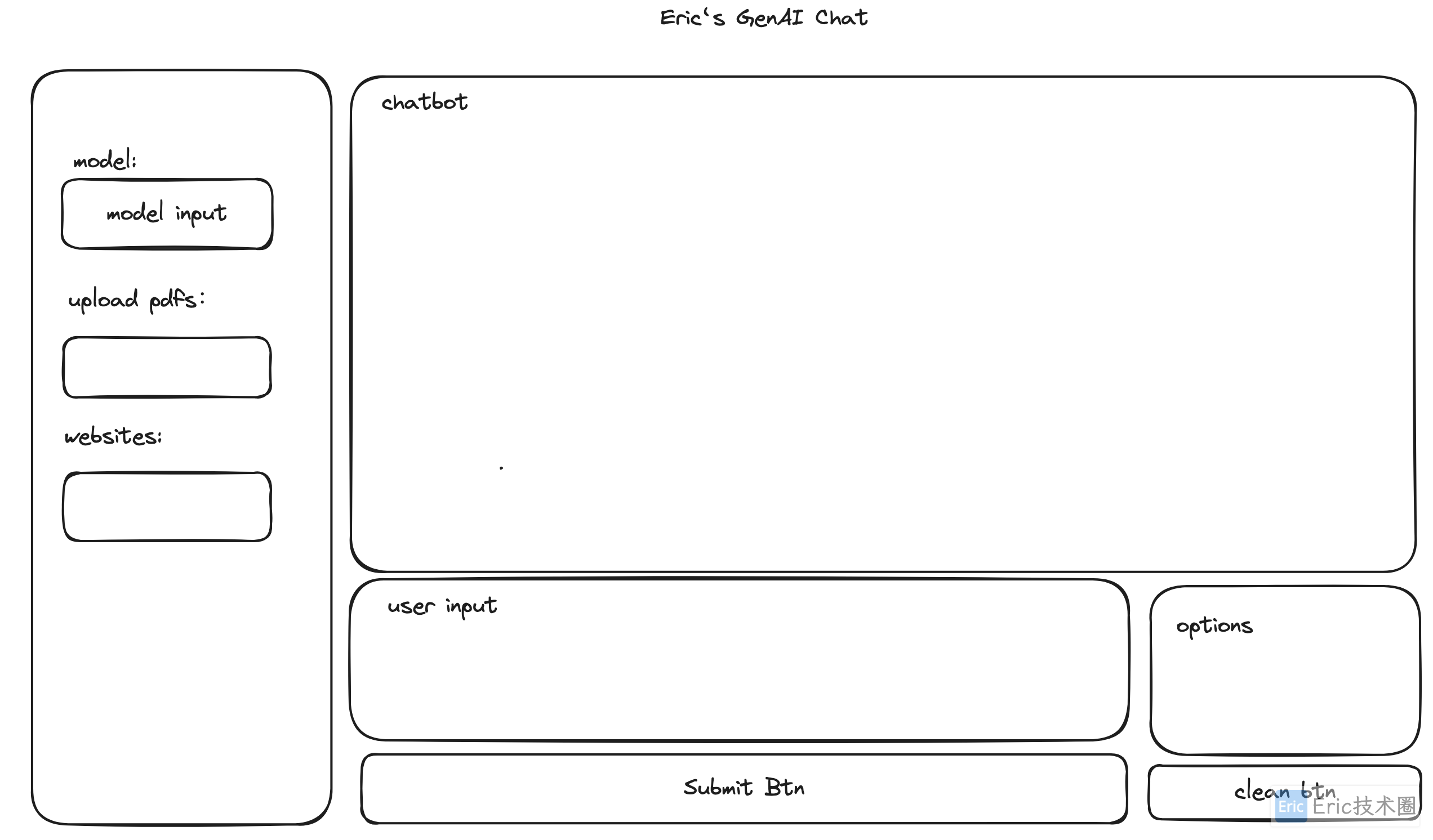
第一阶段先实现多model的切换,当前包含:闭源模型,如:ChatGPT系列、Ollma本地大语言模型、本地量化模型(ChatGLM3-6B)等,后续也可加入更多的模型。说干就干!
实现
首先梳理python项目的结构,参考如图:
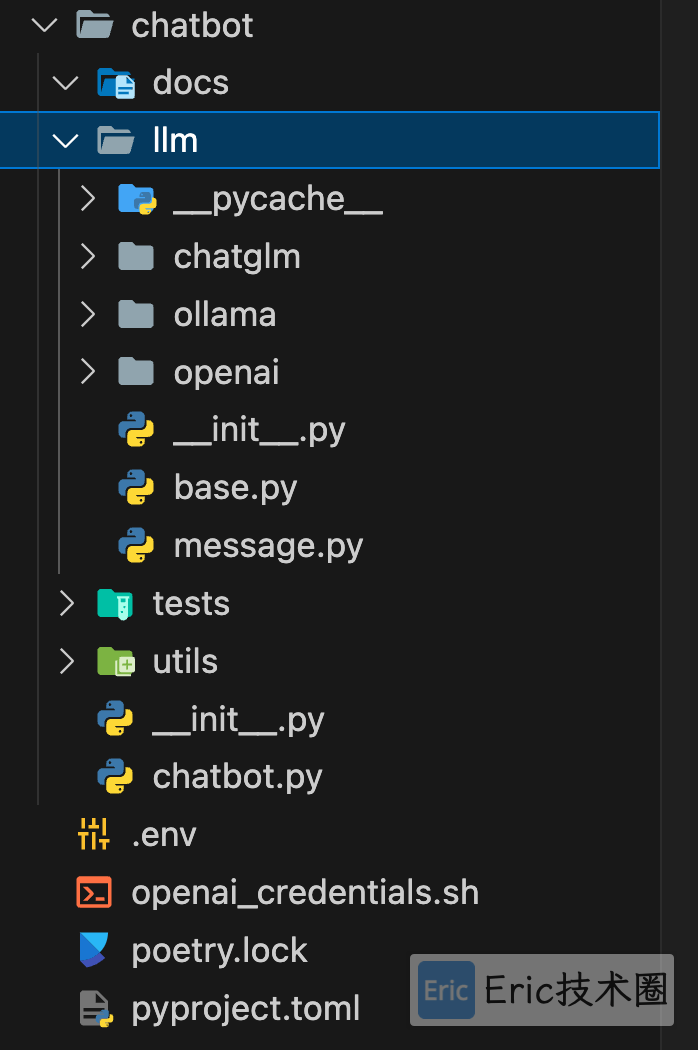
编写完访问LLM代码后,使用Gradio快速搭建Chatbot UI界面,对于不怎么熟悉Python的人也能快速上手,源码如下:
import gradio as gr
from llm.base import LLM
from llm.message import Message
from llm.openai.chat import OpenAIChat
from llm.chatglm.chat import ChatGLMChat
from llm.ollama.chat import OllamaChat
import os
from dotenv import load_dotenv, find_dotenv
from typing import Optional, List, Iterator, Dict, Any, Mapping, Union
# read local .env file
_ = load_dotenv(find_dotenv())
api_key = os.getenv('OPENAI_API_KEY')
api_base = os.getenv('OPENAI_API_BASE')
# select models
llm_clients: Dict[str, LLM] = {}
chatgpt_models = ["gpt-3.5-turbo", "gpt-4-vision-preview", "gpt-4"]
chatglm_models = ["chatglm3-6b"]
ollama_models = ["openhermes", "qwen:7b", "llama2:7b", "mistral:7b", "gemma:7b"]
models = chatgpt_models + chatglm_models + ollama_models
def switch_model(model_name):
print("switch to model: " + model_name)
return []
def get_llm_by_name(model_name):
llm: LLM = None
if model_name in llm_clients:
llm = llm_clients[model_name]
else:
if model_name in chatgpt_models:
llm = OpenAIChat(model=model_name, api_key=api_key, base_url=api_base)
elif model_name in chatglm_models:
llm = ChatGLMChat()
elif model_name in ollama_models:
llm = OllamaChat(model=model_name)
# update dict
if model_name is not None and llm is not None:
llm_clients[model_name] = llm
print(llm_clients)
return llm
def predict(input, model_name, chatbot, messages, max_length, top_p, temperature):
llm = get_llm_by_name(model_name)
if llm is None:
raise Exception("LLM not set")
chatbot.append((input, ""))
user_prompt_message = Message(role="user", content=input) if input else None
messages.append(user_prompt_message)
request_kwargs = dict(
max_tokens=max_length,
top_p=top_p,
temperature=temperature
)
response = ""
for chunk in llm.response_stream(messages, **request_kwargs):
response += chunk
chatbot[-1] = (chatbot[-1][0], response)
yield chatbot, messages
return chatbot, messages
def reset_user_input():
return gr.update(value="")
def reset_state():
return [], []
with gr.Blocks() as demo:
gr.HTML("""<h1 align="center">Eric's ChatBot</h1>""")
with gr.Row():
with gr.Column(scale=1):
model_selection = gr.Dropdown(models, label="select models:", value="gpt-3.5-turbo")
with gr.Column(scale=4):
chatbot = gr.Chatbot()
with gr.Row():
with gr.Column(scale=4):
user_input = gr.Textbox(show_label=False, placeholder="Input...", lines=8)
submitBtn = gr.Button("Submit", variant="primary")
with gr.Column(scale=1):
max_length = gr.Slider(0, 4096, value=2048, step=1.0, label="Maximum Length", interactive=True)
top_p = gr.Slider(0, 1, value=0.7, step=0.01, label="Top P", interactive=True)
temperature = gr.Slider(0, 1, value=0.7, step=0.01, label="Temperature", interactive=True)
emptyBtn = gr.Button("Clear History")
messages = gr.State([])
model_selection.change(switch_model, inputs=model_selection, outputs=[messages])
submitBtn.click(
predict,
[user_input, model_selection, chatbot, messages, max_length, top_p, temperature],
[chatbot, messages],
show_progress=True,
)
submitBtn.click(reset_user_input, [], [user_input])
emptyBtn.click(reset_state, outputs=[chatbot, messages], show_progress=True)
demo.queue().launch(share=False, inbrowser=True)
结果验证
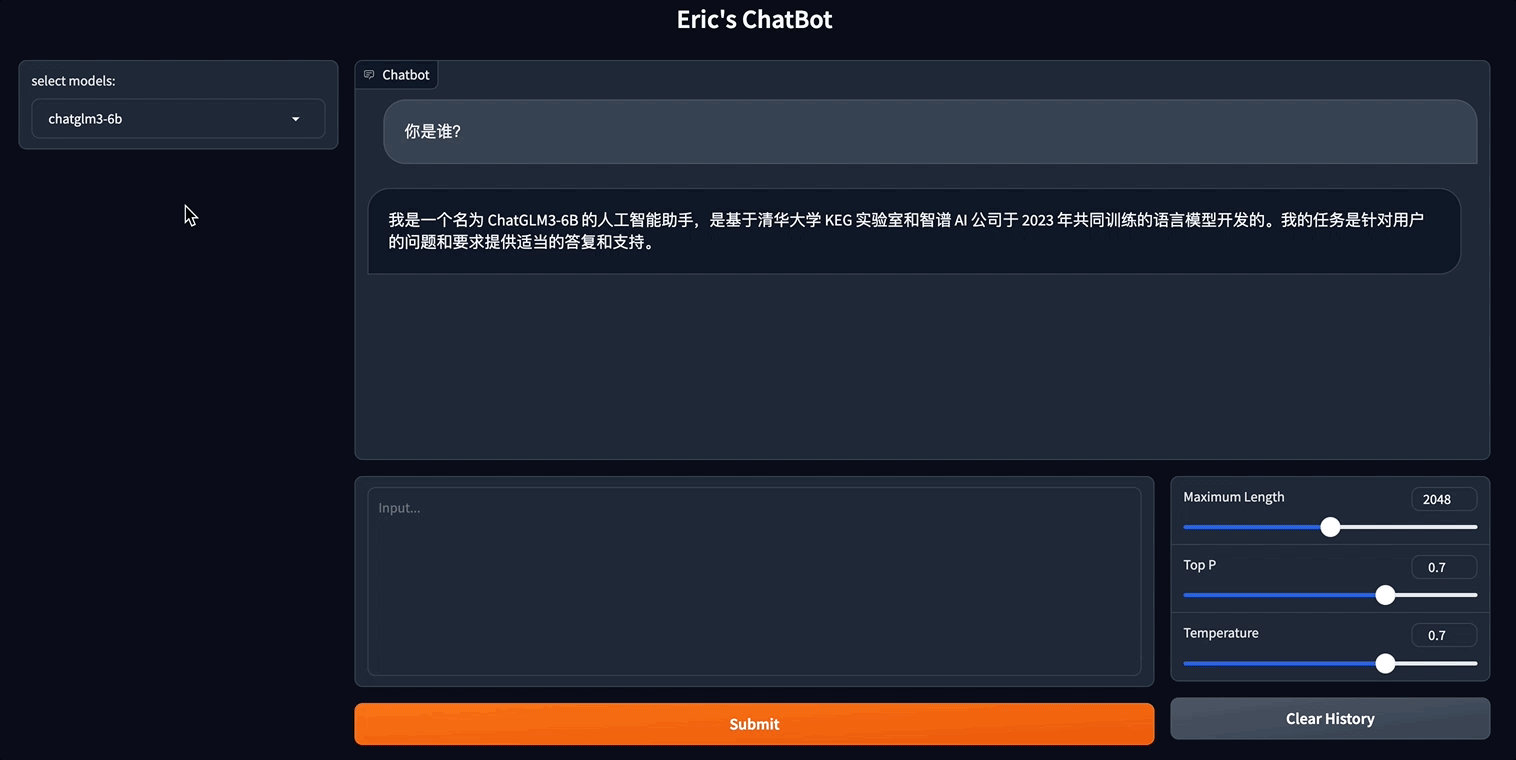
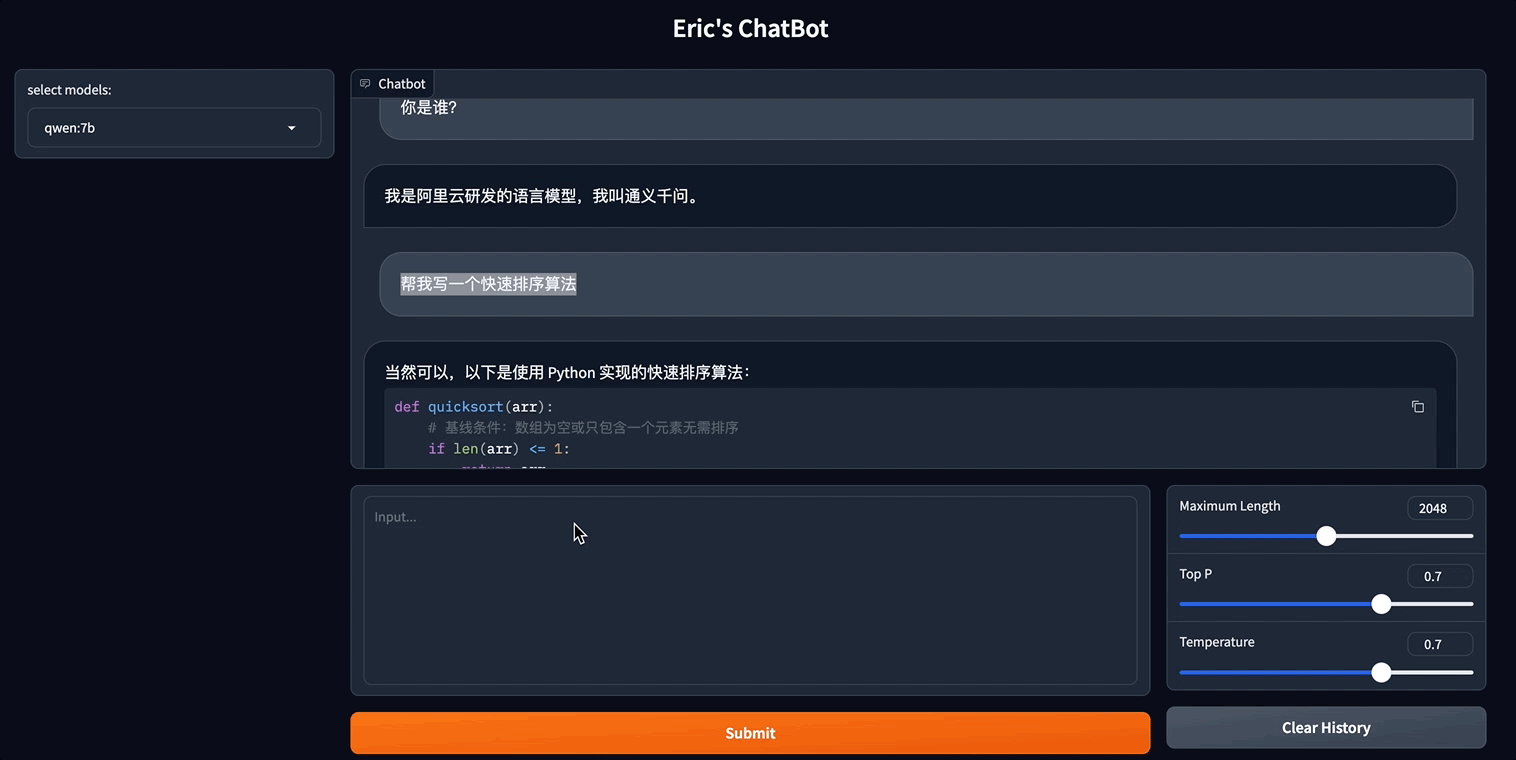
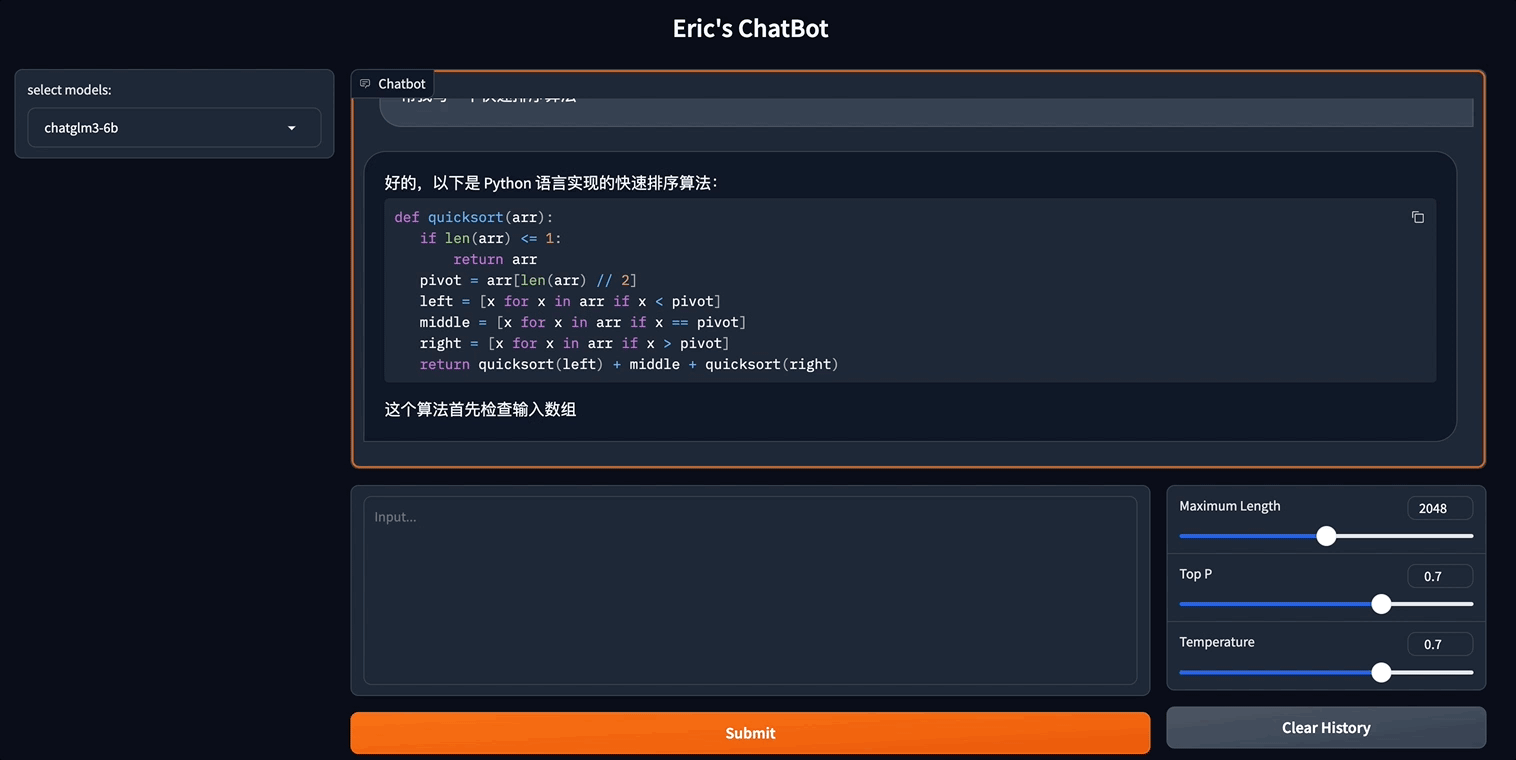
欢迎关注我的公众号“Eric技术圈”,原创技术文章第一时间推送。
License:
CC BY 4.0